The chest cavity is what you should keep in mind. The primary target should be to penetrate both lungs and the heart for the most humane kill possible. Try a broadside shot for the best result.
If that’s not an option, you can try to hit the neck (especially the spine). The superior expanding .223 rounds will ensure a clean kill without much hassle.
Where to Shoot a Deer With a 223?

Broadside presentation
The broadside shot is the most widely known way to hunt a deer with either firearms or bow and arrows. The ideal place to land a broadside shot is just at the back of the deer’s shoulder, right at or above the point created by its shoulder.
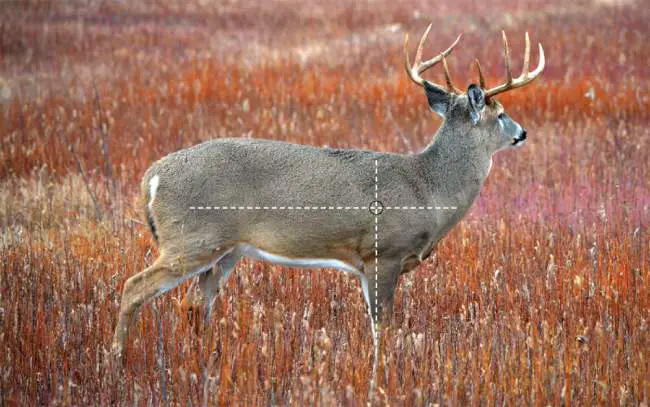
In an ideal scenario, the bullet will penetrate the ribs and exit through the opposite ribs. This will minimize the meat damage and create a big blood trail. A perfectly placed broadside shot will destroy the lungs and the heart of the deer, forcing it to go down without getting too far.
Quartering presentation
Next in our line is the quartering presentation. This is ideal when the deer is quartering to or away from you. If it’s is quartering away from you, aim slightly farther back than broadside and slightly closer in case the deer is quartering towards you.
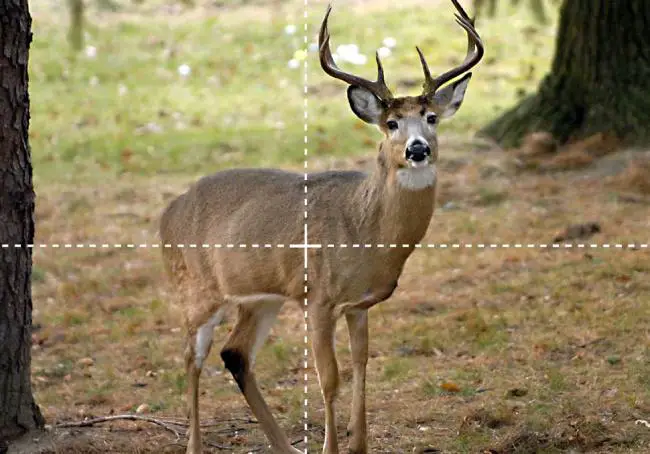
A perfectly landed shot will damage the heart and the lungs, and hit the off-shoulder. Most rifles will be able to break the deer’s off-shoulder, taking the buck off its feet. You don’t want to track your wounded game too far.
Quartering shots provide pretty good access to the vital organs. However, you will face some meat loss in one or both shoulders. The bigger the bore of your rifle, the more meat you’ll lose.
Facing presentation
Next in our line is the facing AKA frontal presentation, where to shoot a deer when it’s facing directly towards you. The direct access to the deer’s heart may seem tempting, but the process is a bit trickier.
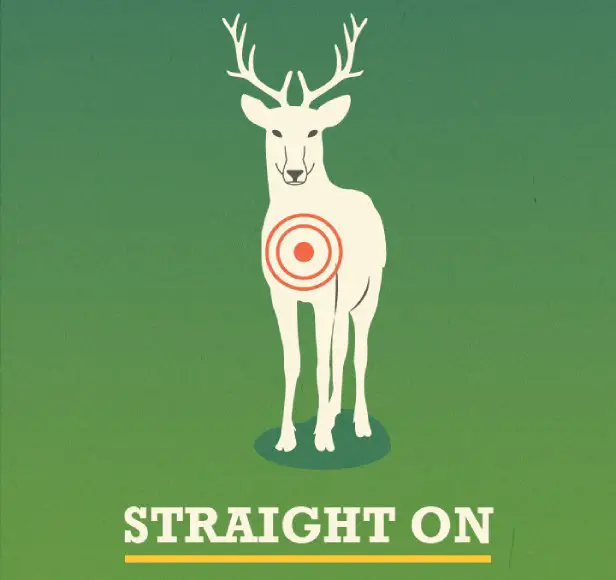
The main downside of a risky frontal presentation is that you can’t hit both lungs at once. Puncturing one lung will kill the animal eventually, but it will have enough breath to get away from you and you’ll risk letting a wounded animal into the woods.
The shot is even trickier with bows and arrows than with firearms. With a firearm, the possibility of hitting a vital organ is greater; even if you miss the shot slightly.
Neck shots
Landing the perfect shot is getting riskier as we dive deeper. Neck shots are risky regardless of the angle you are shooting from. The area where you can shoot is smaller and much more intricate, which makes the job equality challenging to do and rewarding when done right.
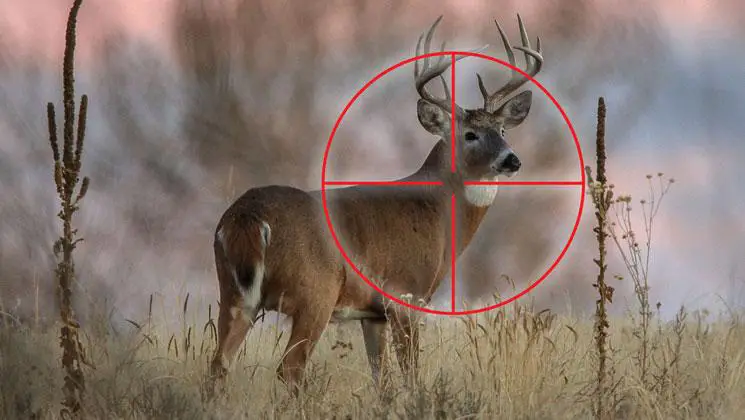
A perfect shot will destroy a part of the vertebrae, killing it almost instantly. You don’t need to actually hit the spine, especially if you’re using a high-end rifle.
A powerful shot will produce enough concussion even if you manage to hit solid muscle within a couple of inches around the spine.
The shot is riskier because if you miss, that will revolve into an ugly mess. No vital organs will be hit to ensure a quick death. Instead, the poor animal deer may stumble off having its head stuck hanging low. This makes tracking extremely hard and the killing inhumane.
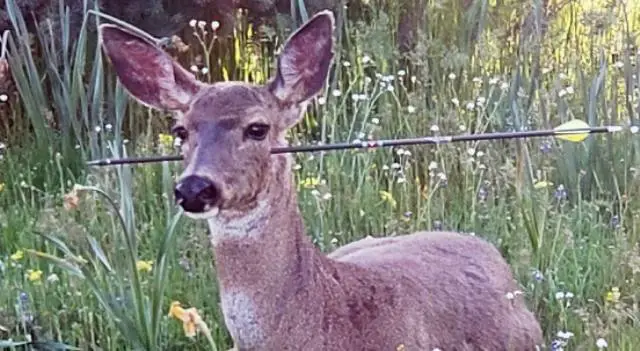
If you don’t have a high-end rifle or you are nervous about the shot, don’t attempt.
Headshot
When done right, it is one of the most lethal shots you can take your game down. Nothing else ensures a quicker kill. You can shoot either in the middle of the eyes, or the brain from the side. Additionally, there will be no meat loss and no tracking the game down.

However, if done wrong, this can be the most gruesome and brutal way to kill an animal. As a result, you need to be careful and have considerable accuracy.
In most cases, the bullet hits the jaw; causing a certain, agonizing, and slow death over the next couple of days, or even weeks.
The base of the skull
Last but not least, we have the best kill shot zone that is located right in between the neck and the head of the deer. For those who don’t want the skull or antler to be damaged, hate meat loss, and are exceptionally accurate with their rifle, the skull’s base is the perfect bullseye.
If you want to score the perfect kill shot, this is the one. However, out of all the shooting spots over a deer’s body, this one is the most difficult and comes with a very low error margin.
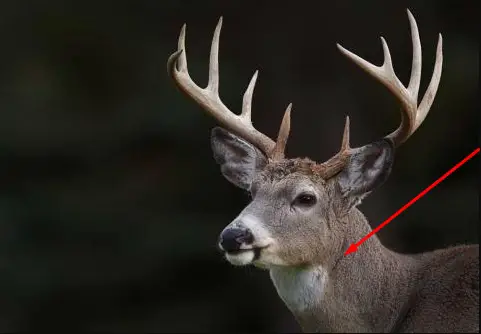
We recommend trying this spot only if you are confident enough that even if you miss, you’ll be able to reach the game and finish the wounded animal off quickly.
Where to Shoot a Deer With a .223: From an Elevation?
If you are camping on high grounds like a treestand, the places you can shoot will change accordingly. Try to hit a bit higher than the usual marks. This will make sure that the bullet penetrates as many vital organs as possible.
Your primary target when hunting a deer will be the lungs, the liver, and the heart. All the rest of the spots should be left alone for a more experienced shooter.
In case the deer comes directly below your treestand, it would be wise to wait for a bit till the buck moves a bit further away from your stand. If you shoot directly below, the angle will make it impossible to hit both lungs and that’s no good. Just wait a bit till you get a cleaner shot.
Where not to shoot a deer
We look for the best spots for shooting deer so that we can gain our trophy and kill the deer as humanely as possible. However, it’s equally important, if not more, to know about the worst places you can shoot a deer. This will help you avoid a bloody mess altogether.
Basically, hitting anywhere except the heart, high-shoulder, lungs, liver, spine or brain won’t secure you a kill. You won’t even be able to recover the wounded animal in most cases.
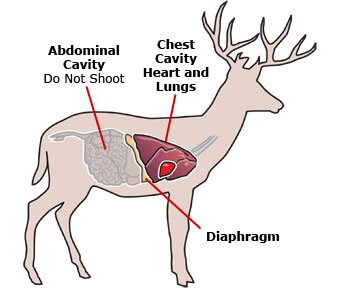
Placing your shots carefully will not only ensure a humane kill but also will minimize the hassles afterward like tracking the buck down and tending to the meat loss.
One other thing, in case of bad shooting, the deers will run far from you. Before you take up the blood trail, please make sure that you give the poor wounded animal enough time to bed down and expire.
Best .223 ammo for deer hunting!
When it comes to deer hunting, you’ll need a bullet that expands well and holds together at higher velocities (like 3000 fps). The lightweight and fast .223 cartridges are perfect for the job.
However, there is a wide variation of .223 caliber bullets with slightly different characteristics. Each one is good at something but obviously not everyone is good at hunting.
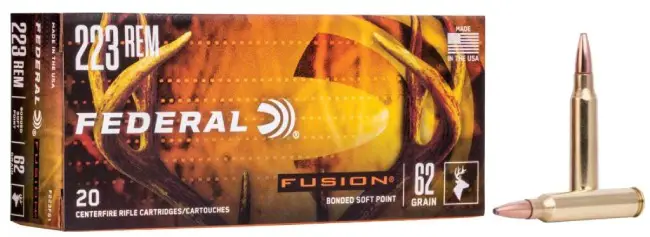
For deer hunting, you’ll need a controlled expansion bullet that will expand well and won’t just fall apart. We recommend using the Winchester Deer Season XP, Federal Fusion, .223 Remington, or the PPU 55-grain soft point bullets.
The Winchester Deer Season XP and the Federal Fusion is the high-end option here with a higher price. The PPU 55-grains provide similar results and are significantly cheaper.
However, The PPU 55-grain rounds aren’t as accurate as the other ones and some states have banned lower grain (<60) bullets for hunting. Check out your local hunting guideline before heading out into the woods.
FAQs
1. What is the effective deer hunting range for a .223 bullet?
Ans: Around 150 yards. Though many hunters have killed whitetail deers with a .223 bullet from over 200 yards, it isn’t recommended. The bullet slows down quickly after 150 yards, losing its penetration power.
2. Is it legal to hunt deer with a .223?
Ans: Yes. In most states in the USA, it is legal to hunt whitetail deers with a .223. However, you need to choose your bullet carefully depending on the size of your game and the shooting conditions.










